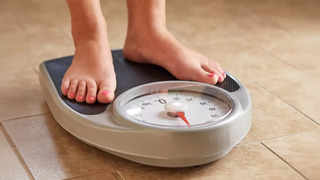In this article:
With all of your body's changes, you may be wondering what kind is beneficial to you and your baby, and how much should you do.
The good news is that you don't have to give up most of the activities you love, as long as your pregnancy is healthy and you're not at risk of falling.
What Are The Advantages Of Exercising When Pregnant?
Exercise benefits both you and your baby. As long as you are not facing any complications, you may exercise to improve your fitness. Additionally, exercise helps you and your body get ready for labour. If you were active before pregnancy, you are more likely to gain less weight while pregnant. However, you should not try to actively lose weight while you are pregnant.
Exercising may help you ease back discomfort, improve posture, reduce constipation, protect your joints, and sleep better. All of these factors may help prevent difficulties later in pregnancy.
What Exercises Are Safe in the Second Trimester?
Walking
Walking is extremely beneficial exercise during pregnancy. Most contemporary birthing centres allow women to stroll in the hours and sometimes even minutes leading up to birth.Walking and arms allow you to strengthen and stretch your upper body. Walking at a rapid pace is a cardiovascular-friendly workout.
A healthy walking plan consists of 30 minutes per day, three to five days per week. If you're not used to walking, you may start slow and then gradually increase the frequency of your walks.
Yoga
Yoga might be beneficial for pregnant women, especially gentle and strengthening exercises. It will help you stretch muscles, relieve discomfort in your lower back, and lower your blood pressure.Learning to breathe with your body's motions is an important aspect of yoga practice that will help you throughout labour and delivery.
If you already practice yoga, stick to your regimen as long as it's comfortable. Avoid postures where you could fall, such as warrior pose and tree pose. Avoid twisting the abdomen. Hot yoga should be avoided when pregnant.
Three to five times a week is ideal, but if you like to practice every day, go for it. Thirty minutes of yoga is a healthy regimen, but you may go longer if you like.
Swimming and Water Aerobics
Water sports are ideal during pregnancy, as they are low-impact and safe. Additionally, water can be calming. Water sports may also increase your strength and aerobic ability. Concentrate on swimming movements that develop the core muscles without twisting the abdomen.Maintain your current pool workout routine. If you're new to swimming, seek a swimming coach or trainer at the pool you use to help you build a safe routine.
You may swim for thirty minutes each day.
Running
If you were a runner before becoming pregnant or ran safely throughout your first trimester, you should be able to maintain your running regimen. Remember that your body is evolving, especially your centre of gravity. This increases your risk of falling, so you should stick to light jogs or use a treadmill with safety bars. For the time being, stay away from unfamiliar paths or pathways that are uneven or damaged. If you haven't run before, this is not the time to start.
Stop running if you get joint or back discomfort, or if you have any other concerns.
Follow your usual running schedule, or aim for 30-minute runs three to five times a week.
Pelvic Floor Exercise
You may be familiar with Kegel exercises, but they are only one technique to care for your pelvic floor throughout pregnancy (and beyond). In fact, many women are unaware of how crucial it is to understand how to relax the pelvic floor for pelvic health.Many pelvic floor professionals recommend that you prepare your pelvic floor for pregnancy and childbirth by performing strengthening and relaxation exercises. However, if you have any questions or are experiencing any uncommon symptoms, consult your OB/GYN, who may advise you to see a pelvic floor physical therapist for a more personalised routine.
To strengthen the pelvic floor while pregnant
Most experts recommend focusing on pelvic floor strength and endurance throughout the first and second trimesters of pregnancy. This keeps your pelvic floor strong as your baby grows, allowing you to adjust to the increased load on these muscles during your pregnancy.To accomplish this, contract and relax your pelvic floor muscles (also known as Kegels). You can incorporate them into your regular fitness routine. For example, if you regularly lift weights, consider contracting your pelvic floor on the exhale while performing a bicep curl.
You can also incorporate pelvic floor exercises into your warm-up and cool-down routines, such as performing 10 to 20 contractions before and after a walk or bike ride.
When performing Kegels, make sure to contract and release your pelvic floor completely. Try this:
- Sit comfortably on the floor, knees bent
- Take a deep breath and feel your ribcage expand
- On the exhale, contract and elevate your pelvic floor
Importance of Warm Up and Cool Down
A proper warm-up and cool-down session is required during exercise in the second trimester. Warming up helps your body prepare for physical activity by improving blood flow to muscles and joints, which lowers the risk of injury. A moderate warm-up activity, such as walking or light stretching, can help you gain flexibility and ease into your workout. Similarly, cooling down allows your heart rate to gradually return to normal, lowering the risk of dizziness and fainting. Slow stretching and deep breathing can help you relax more after exercise.Safety First
As long as you and your child are healthy, a lot of activities are safe when done in moderation.Avoid actions that might result in a hard fall. You may have ridden a bike safely throughout the first trimester, but why take the chance now? If bike riding is an important part of your fitness program, stick with a stationary bike from now on.
Exercises to Avoid During Your Second Trimester
During the second trimester of pregnancy, your blood pressure falls. So make sure you're not shifting positions too often. Going from standing to reclining or moving too quickly might cause dizziness and imbalance. There are also specific workouts to avoid throughout your second trimester. Push Ups And Planking
By the second trimester, you should have progressed from conventional or knee push-ups to wall push-ups. This will lessen the tension on your core and back. Planking is also safe in the first trimester, but you should change your planks during the second trimester. Try planking in shorter periods to avoid straining your abdominal muscles.Back Workouts
When you reach the second trimester, avoid reclining on your back for workouts. Laying on your back as your uterus expands with your baby might restrict blood supply to important organs.Lifting Heavy Weights
A key element of any fitness program is strength training. However, by the second trimester, avoid lifting more than 4 to 8 kgs of barbells. You should also refrain from carrying toddlers, other youngsters, and heavy things.By the second trimester, you may continue walking, swimming, and performing other pre-pregnancy workouts. However, avoid high-impact activities.
You Should Quit Exercising
- If you feel sick
- Become overly heated
- Have symptoms including dehydration, vaginal discharge, bleeding, and abdominal/pelvic discomfort
Signs To Check For When Exercising In Your Second Trimester
Even if you were physically active before pregnancy, activity during the second trimester should be approached with care. There are several warning indicators you should look out for while exercising. If you encounter any of the following, contact your obstetrician immediately:- Bleeding from the vagina
- Feeling dizzy or faint
- Shortness of breath before or when exercising
- Chest discomfort
- Muscle weakness
- Headache or Migraine
- Calf discomfort or oedema
- Consistent and painful uterine contractions
- Fluid pouring or spilling from the vagina
Keep an eye out for the following:
- Swelling in the hands, face, or feet
- Heart palpitations
- Cramping in the lower abdomen
- Trouble walking
- Change in your baby's movements.
- Extreme fatigue
Even if you were not an athlete before pregnancy (or if you were unable to exercise during your first trimester due to nausea), now is an excellent time to begin with light exercise. Simply don't push yourself too much. Most essential, don't forget to relax and have fun.
Hydration and Nutrition
Maintaining sufficient hydration and nutrition is essential when exercising during pregnancy, especially in the second trimester. To stay hydrated, drink plenty of water before, during, and after exercise. Dehydration can cause weariness, dizziness, or cramping. Additionally, nourish your body with nutrient-dense foods to benefit both you and your developing baby. A well-balanced meal rich in carbohydrates, proteins, healthy fats, and vitamins can help you stay energised and recover from exercise. Exercise on an empty stomach is not recommended, and a small snack before or after your workout may be necessary.Heart Rate Monitoring
Monitoring your heart rate while exercising is an important safety precaution. The goal is to keep your heart rate within a healthy range, often between 60% and 70% of your maximal heart rate. This ensures that you work out at an intensity that promotes cardiovascular health without overexertion. Because pregnancy alters your cardiovascular system, it's critical to listen to your body and reduce the intensity of your workouts if you feel tired or dizzy. Always consult your healthcare practitioner to identify the best heart rate zone for you.Customised Plans (Prenatal Exercise)
Exercise during the second trimester should be adjusted to your individual needs, fitness level, and any particular suggestions from your healthcare provider. Pregnancy exercises, including pelvic floor strengthening, low-impact aerobics, pregnancy yoga, and swimming, can help alleviate typical pregnancy symptoms like back pain, oedema, and exhaustion. A personalised plan should prioritise developing strength and flexibility, promoting correct posture, and preparing your body for labour. After the first trimester, avoid high-risk activities and workouts that need you to lie flat on your back, as these can limit blood supply to the uterus. Always check with your doctor before beginning or changing your exercise routine to ensure that it is safe for you and your baby.FAQs on Exercising In The Second Trimester: Dos And Don'ts Of Pregnancy Workouts
- Is jumping harmful in the second trimester?
Given the serious repercussions that leaping may have on pregnant women, experts advise against jumping, skipping, and other similar activities during pregnancy. - What are the rules for exercising during the second trimester of pregnancy?
Opt for low-impact activities like yoga, swimming, and walking. Begin with low-intensity exercise and gradually increase to 30 minutes each day, three to five times per week. If possible, engage with a trainer who specialises in working out while pregnant.











